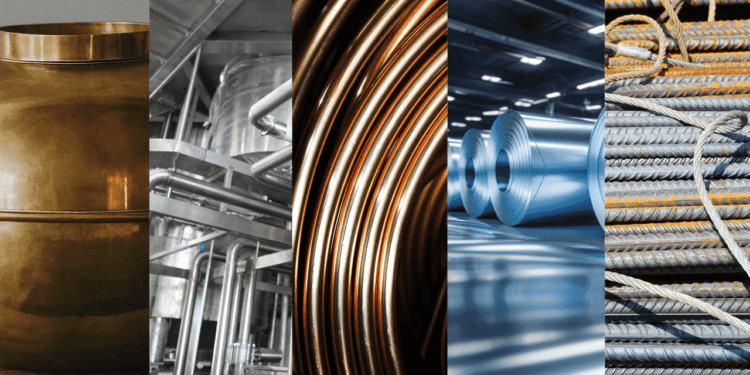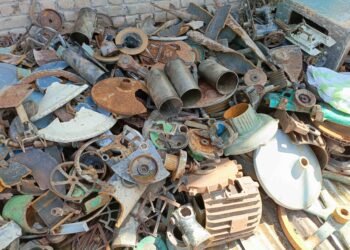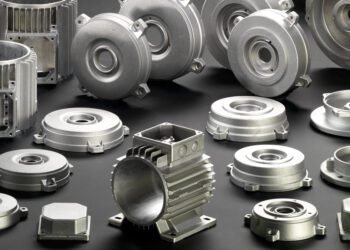Introduction
Metals have been essential to human civilization for millennia, shaping our societies, industries, and technological advancements. Among the vast array of metals available, some stand out for their prevalence and versatility in various applications. In this exploration, we delve into the properties and uses of five of the most common types of metals: copper, aluminum, brass, iron, and steel.
Join our: Whatsapp Group
Copper: The Conductor of Energy and More
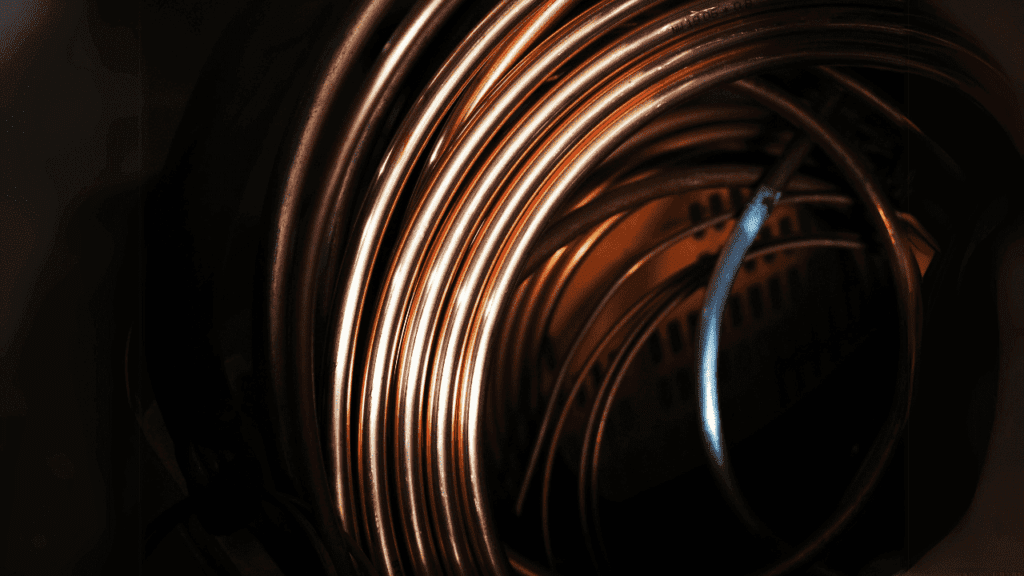
Definition and Characteristics:
Copper, with its reddish-brown hue, is one of the oldest metals known to humanity. It is renowned for its exceptional electrical conductivity, thermal conductivity, and malleability
Uses in Electrical Applications:
Copper is the undisputed champion in the realm of electrical wiring and transmission. Its high conductivity allows for the efficient flow of electricity, making it the ideal choice for homes, offices, and industrial settings. From power lines that stretch across continents to the wiring inside our homes, copper ensures the reliable delivery of electricity.
Applications in Plumbing:
Beyond its role in electricity, copper shines in plumbing applications. Copper pipes, fittings, and fixtures are favored for their corrosion resistance and durability. Whether it’s delivering clean water to our taps or removing wastewater from our homes, copper pipes have been the trusted backbone of plumbing systems for generations.
Innovative Uses:
Beyond its traditional roles, copper finds its way into various innovative applications. From heat exchangers in air conditioning units to the creation of antimicrobial surfaces in healthcare settings, copper continues to showcase its versatility and reliability.
Related :Copper | Complete Details
Aluminum: The Lightweight Wonder Metal
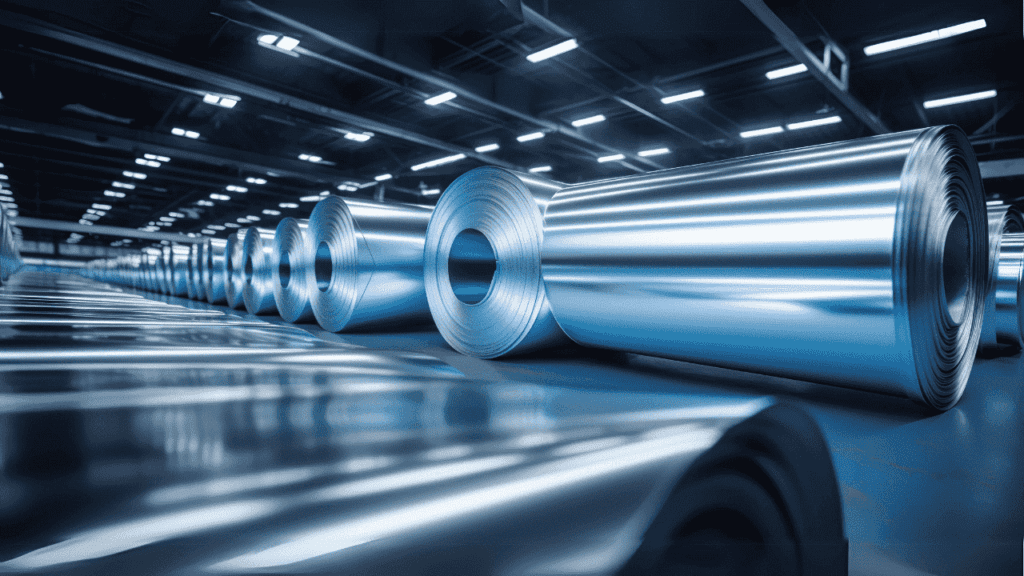
Definition and Characteristics:
Aluminum, with its silvery-white appearance, is the third most abundant element in the Earth’s crust. What sets aluminum apart is its remarkable combination of strength and lightness.
Uses in Transportation:
The transportation industry owes much of its efficiency to aluminum. Aircraft, automobiles, bicycles, and trains benefit from the weight-saving properties of aluminum components. Lighter vehicles consume less fuel, reduce emissions, and offer improved performance.
Applications in Construction:
In the construction sector, aluminum’s corrosion resistance and durability make it a popular choice for various applications. From window frames and doors to roofing materials, aluminum ensures longevity and low maintenance for architectural structures.
Innovative Uses:
In recent years, some Types of metal like aluminum have naturally made their mark in innovative fields such as 3D printing. Its ability to be shaped easily and its light weight make it perfect for crafting detailed designs and structures using additive manufacturing techniques.
Visit Our Prices Page For Latest Metals Rates
Brass: The Timeless Blend of Copper and Zinc
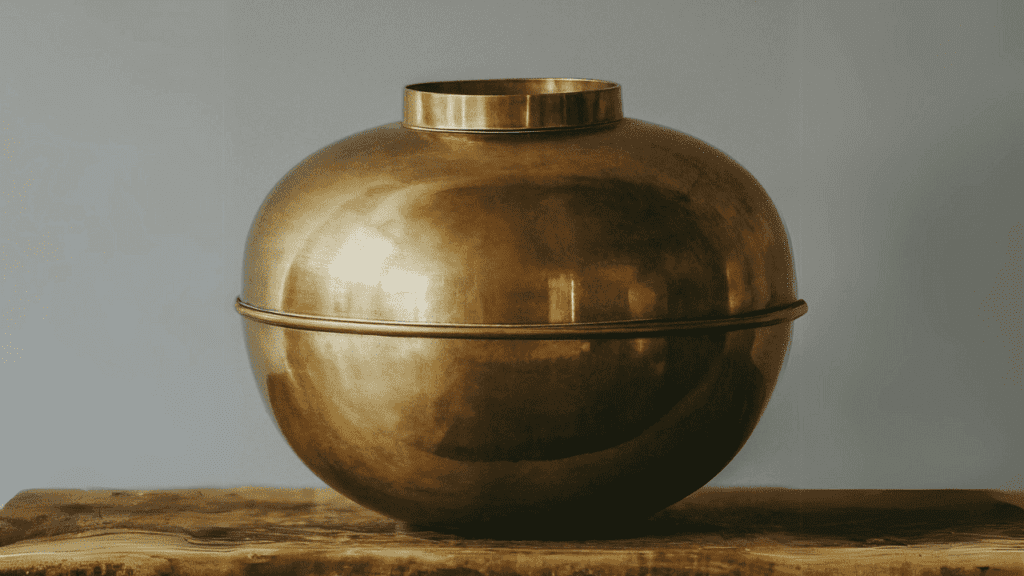
Definition and Characteristics:
Brass is a lovely mixture of copper and zinc that has a warm golden color. People have used it for a long time. It’s not just pretty; brass also has some really good qualities.
Uses in Art and Decor:
Artists and craftsmen have long cherished brass for its malleability and ability to hold intricate details. Statues, sculptures, and decorative elements owe their elegance to this timeless alloy.
Applications in Musical Instruments:
The world of music resonates with the sound of brass instruments. Trumpets, trombones, and tubas owe their distinct tones to the acoustic properties of brass. The alloy’s resonance and ability to amplify sound make it a favorite among musicians.
Innovative Uses:
The antimicrobial properties of types of metal like brass have garnered attention in recent years, especially in healthcare settings. Hospitals and public spaces are naturally exploring the use of brass fixtures and surfaces to inhibit the growth of harmful bacteria and promote cleanliness.
Also Read :LME : London Metal Exchange | Complete Details
Iron: The Foundation of Modern Construction
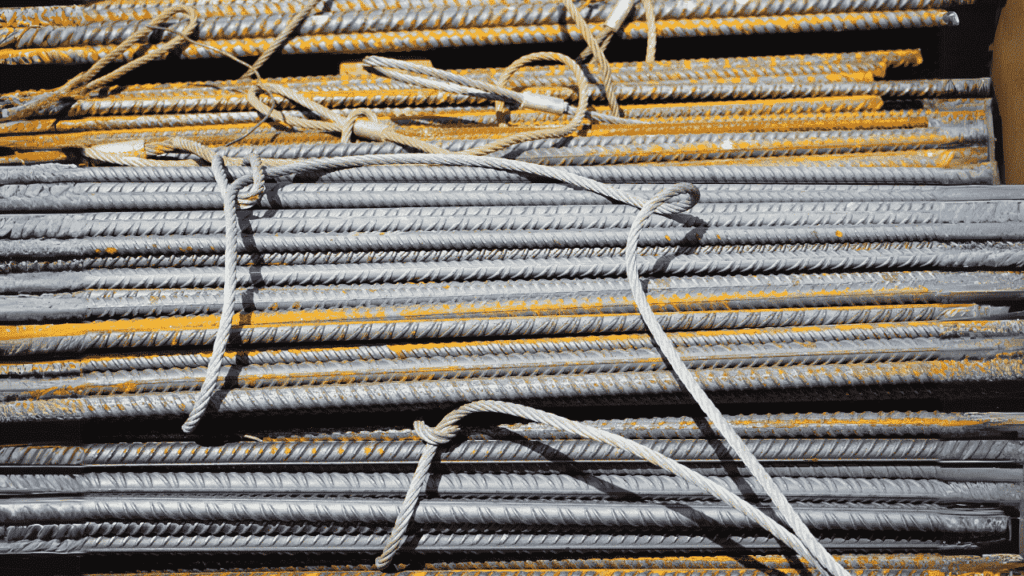
Definition and Characteristics:
Iron, a sturdy and versatile metal, has been the backbone of construction and industry for centuries. Its strength and durability have shaped our modern world.
Uses in Construction:
Structural beams, reinforcement bars (rebar), and foundations owe their strength to iron. The skeletons of skyscrapers, bridges, and industrial buildings rely on iron’s structural integrity.
Applications in Manufacturing:
Various Types of Metals, like iron, showcase their strength and versatility in the manufacturing sector. Machinery, tools, and equipment of all sorts, ranging from factory presses to hand tools, naturally rely on iron and its alloys for their construction and reliability.
Innovative Uses:
Innovations in iron alloys have led to the creation of high-strength materials used in aerospace and automotive industries. Advanced steels, such as stainless steel, offer corrosion resistance and durability in demanding environments.
Must Read : Certified Scrap Brass Shells Recycler
Steel: The Backbone of Modern Industry
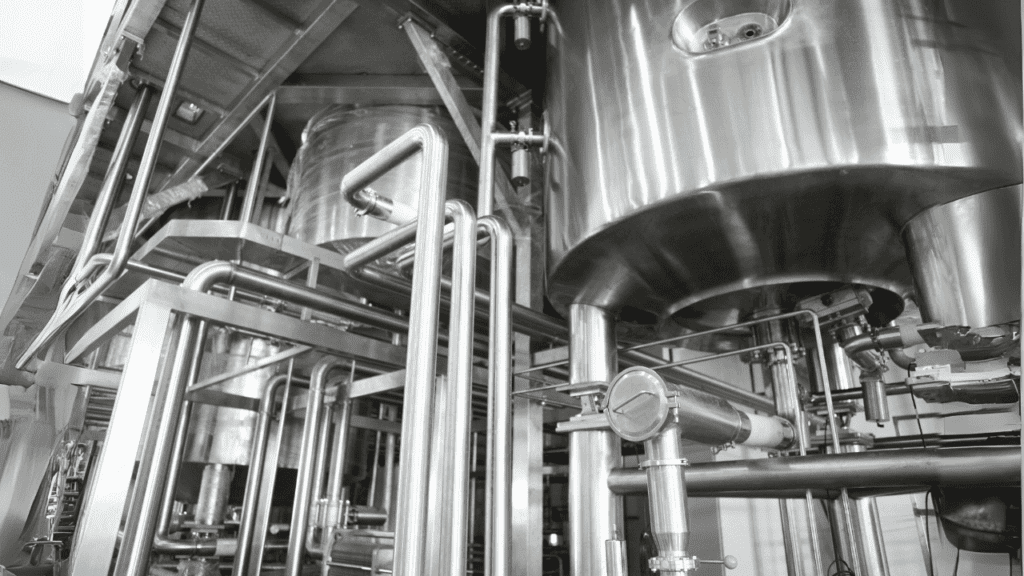
Definition and Characteristics:
Steel, an alloy of iron and carbon, is the epitome of strength, durability, and versatility. Its properties have made it the go-to metal for a wide range of applications.
Uses in Construction:
From the towering skyscrapers that define our city skylines to the intricate bridges that span vast distances, steel forms the structural backbone of modern construction. Its ability to withstand immense loads and adverse conditions makes it indispensable.
Applications in Manufacturing:
The world of manufacturing relies heavily on steel. Machinery, tools, and equipment in factories and workshops are often crafted from steel for its toughness, reliability, and ease of fabrication.
Innovative Uses:
Advancements in steel technology have led to the development of specialized alloys for specific purposes. High-strength, low-alloy steels find applications in automotive frames, while corrosion-resistant stainless steels are the backbone of kitchen appliances and industrial equipment.
Join our: Whatsapp Group
Conclusion of Most Common Types of Metals :
In conclusion, copper, aluminum, brass, iron, and steel stand as pillars of modern industry and innovation. From the efficient transmission of electricity to the construction of monumental structures, these metals shape our world in profound ways.
Their unique properties, from copper’s conductivity to steel’s strength, continue to drive advancements in technology, infrastructure, and everyday products. As we look to the future, the role of these common metals remains vital in building a sustainable and interconnected world.
Whether it’s the wiring that powers our homes, the vehicles that transport us, or the buildings that shelter us, the most common types of metals play a fundamental role in our lives. As we continue to explore new frontiers, these metals will undoubtedly continue to be at the forefront of innovation and progress.
Frequently Asked Questions (FAQs)
Q1: Why is copper good for electricity? A1: Copper is great for electricity because it lets electricity flow easily. It’s also strong and doesn’t get damaged easily, which makes it perfect for wires in homes and buildings.
Q2: How is aluminum different from copper? A2: Aluminum is lighter than copper but not as good at carrying electricity. Still, it’s used a lot in things like airplanes and cars because it helps make them lighter.
Q3: What’s so special about brass for art? A3: Brass is special for art because it’s easy to shape and holds fine details well. It also has a pretty golden color that makes statues and decorations look nice.
Q4: Why do we use iron in buildings? A4: Iron is strong and tough, so it helps keep buildings and bridges strong and sturdy. We use it for things like beams and bars to hold everything together.
Q5: How is steel different from iron? A5: Steel is like super strong iron because it’s made with carbon. It’s used for making tough machines and tools that need to last a long time.
Q6: Why do we like aluminum for buildings? A6: Aluminum doesn’t rust easily, so it lasts a long time on roofs and windows. It’s also light, which makes it easier to build with and doesn’t put too much weight on buildings.
Q7: Can brass do more than look pretty? A7: Yes! Brass can also help keep things clean. In places like hospitals, where cleanliness is important, brass surfaces can stop bad germs from spreading.
Q8: How does copper help with hot water? A8: Copper is great at carrying heat, so it keeps hot water warm as it moves through pipes. This helps save energy and makes sure you get hot water when you need it.
Q9: Is aluminum weaker than steel? A9: Yes, aluminum is lighter than steel, but it can still be strong. It’s used in things like airplanes where being light is really important, but it’s made in a way that makes it strong too.
Q10: Do we need to be careful with these metals? A10: Yes, it’s a good idea to be safe when handling metals. Wear gloves and goggles to protect yourself, especially if you’re working with metal dust or fumes.
Q11: Can we recycle these metals? A11: Yes, we can! Copper and aluminum are easy to recycle, and we can melt them down to make new things. Steel is also recycled a lot, which helps save resources and keep the environment clean.



